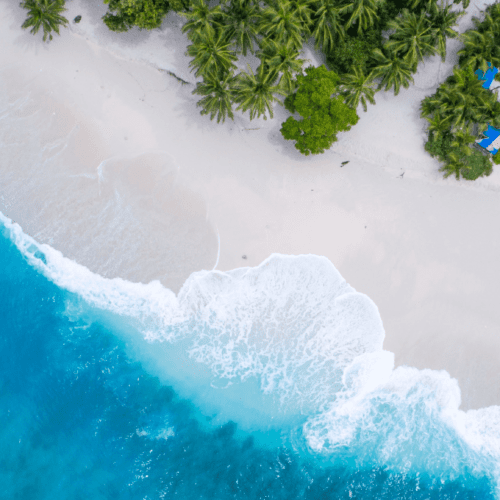Visit Bhutan in Winter
Table of Contents
Visit Bhutan in Winter and experience a serene, magical world unlike any other. Winter in Bhutan is a time of tranquility, beauty, and unique cultural experiences, making it the perfect season for travelers seeking adventure and peaceful landscapes. With the crisp mountain air, snow-covered landscapes in Bhutan, and a rich blend of cultural festivities, there’s something for every traveler.
In this blog, we’ll explore the many reasons why visiting Bhutan in winter is an unforgettable experience. From winter weather in Bhutan and snow-covered landscapes to winter festivals in Bhutan and treks, we’ll cover everything you need to know to make the most of your winter getaway. So, if you’re wondering how to enjoy Bhutan’s majestic winters, you’ve come to the right place!
Why Visit Bhutan in Winter?
Visit Bhutan in Winter to witness a side of the country that’s serene and peaceful, with fewer tourists and a unique charm. The winter months, from December to February, reveal a tranquil side of Bhutan, with snow-capped peaks and valleys covered in frost. While other parts of the world may be bustling with tourists during this season, Bhutan remains an untouched paradise, making it an ideal destination for those seeking solitude, nature, and cultural exploration.
Bhutan’s winter offers a special blend of cultural richness and adventure. The snow-covered landscapes in Bhutan provide the perfect backdrop for winter treks, and the country’s winter festivals in Bhutan showcase vibrant traditions. Whether you’re exploring historic monasteries or enjoying the natural beauty of the snow-covered landscapes, Bhutan’s winter offers an unforgettable experience for every type of traveler.
Winter Weather in Bhutan
The winter weather in Bhutan varies depending on the region. In the northern mountains, temperatures can drop below freezing, with heavy snowfall, especially in areas like the Bumthang Valley and Phobjikha Valley. On the other hand, the southern valleys of Bhutan, such as Samdrup Jongkhar, enjoy milder winter temperatures, making it easier for those who prefer a more temperate climate.
What to Expect:
- Northern Bhutan (Mountains): Cold temperatures, snowfall, and chilly winds. Ideal for trekking and those who love winter landscapes.
- Southern Bhutan (Valleys): Milder temperatures, with occasional frost but generally comfortable for travel.
- Average temperatures: In the highlands, expect temperatures ranging from -5°C to 10°C (23°F to 50°F), while in the lowlands, temperatures can vary between 5°C and 20°C (41°F to 68°F).
When visiting Bhutan in winter, be prepared for these temperature variations. Winter travel tips for cold seasons include packing warm layers, a good pair of trekking boots, and winter gear to stay comfortable in colder regions.
Explore Snow-Covered Landscapes in Bhutan
One of the best reasons to visit Bhutan in winter is the opportunity to explore its snow-covered landscapes. The country’s stunning natural beauty is magnified by the winter months, when everything from the mountains to the valleys transforms into a winter paradise. The cool, crisp air and the peaceful atmosphere of Bhutan during winter make it an ideal time to enjoy the outdoors.
Some of the must-see destinations for snow-covered landscapes in Bhutan include:
- Paro and the Tiger’s Nest Monastery: The iconic Tiger’s Nest, perched high on a cliff, is surrounded by snow-capped mountains and a frosty landscape during the winter months. The view from the monastery is even more breathtaking in winter, with the surrounding peaks blanketed in snow.
- Thimphu and the Buddha Dordenma: Thimphu, Bhutan’s capital, offers a panoramic view of the snowy Himalayan range, with the majestic Buddha Dordenma statue standing tall against the winter backdrop. The view of the valley covered in frost, with snow on the surrounding hills, is a sight to behold.
- Bumthang and Phobjikha Valley: Known for its peaceful setting and scenic beauty, these regions become magical during winter. The snow-covered landscapes in Bhutan here are perfect for quiet reflection, hiking, and winter photography. Phobjikha Valley is also home to the famous Black-Necked Crane Festival, where visitors can watch the graceful cranes as they migrate back to the valley.
The snow-covered landscapes in Bhutan provide incredible opportunities for photography, outdoor activities, and peaceful exploration, making winter the best time to visit Bhutan and experience its natural beauty in full.
Bhutan Winter Treks and Adventures
For those seeking adventure, winter in Bhutan offers a range of exciting opportunities, particularly for trekkers. Bhutan winter treks are a highlight for many, offering breathtaking views of the snow-covered mountains and valleys. These treks are typically less crowded during winter, allowing you to enjoy the tranquility of Bhutan’s wild landscapes in peace.
Here are some of the best winter treks in Bhutan:
- Nabji Korphu Trek: This cultural trek is ideal for winter. It takes you through remote villages, Buddhist monasteries, and valleys that are blanketed in snow, offering a unique opportunity to experience Bhutanese culture up close while surrounded by stunning winter scenery.
- Jomolhari Trek: One of Bhutan’s most famous treks, Jomolhari takes you through the heart of the Himalayas and provides stunning views of snow-covered peaks and high-altitude lakes. During winter, the snow-covered landscapes make the trek even more enchanting, though it’s recommended for experienced trekkers due to its challenging terrain.
- Dagala Thousand Lakes Trek: Known for its rugged trails, this trek takes you past frozen lakes, offering an exhilarating winter experience that’s perfect for nature lovers.
In addition to winter treks in Bhutan, other activities such as birdwatching, visiting traditional Bhutanese hot stone baths, and exploring remote monasteries are excellent winter activities. Make sure to follow Bhutan travel tips for cold seasons, like packing suitable clothing, trekking gear, and ensuring you’re well-prepared for the challenges of trekking in colder temperatures.
Winter Festivals in Bhutan
Winter in Bhutan is also an excellent time to experience the country’s vibrant winter festivals in Bhutan. These festivals provide a deep cultural insight into Bhutanese traditions, and witnessing them during the winter season makes the experience even more magical. Winter festivals in Bhutan are filled with colors, music, dance, and religious performances that celebrate the country’s rich heritage.
Some of the most famous winter festivals in Bhutan include:
- Dochula Tsechu: Held in December, this festival at Dochula Pass offers a stunning view of the Himalayan mountains. It features traditional mask dances, cultural performances, and prayers to honor Bhutanese spiritual beliefs. The festival is set against a backdrop of snow, adding an ethereal quality to the celebration.
- Black-Necked Crane Festival: Celebrated in Phobjikha Valley, this festival honors the return of the Black-Necked Cranes to Bhutan. The festivities include traditional songs, dances, and storytelling, highlighting the cultural and environmental significance of the cranes to the Bhutanese people.
These winter festivals in Bhutan provide a vibrant and festive atmosphere in contrast to the serene landscapes. They offer travelers a chance to experience Bhutanese culture at its most authentic, all while surrounded by snowy mountains and valleys.
Bhutan Travel Tips for Cold Seasons
When visiting Bhutan in winter, it’s important to be prepared for the cold weather. Here are some practical Bhutan travel tips for cold seasons to help you stay comfortable and make the most of your winter trip:
- Layer your clothing: Wearing layers is key to staying warm in Bhutan’s varying temperatures. Start with a thermal base layer, followed by a fleece or sweater, and finish with a waterproof and windproof outer layer.
- Pack suitable trekking gear: If you’re planning to trek, make sure to bring appropriate gear, such as waterproof boots, gloves, a warm hat, and trekking poles to help with icy conditions.
- Book in advance: Winter is off-season in Bhutan, so you may find fewer tourists, but accommodations and treks may still require early booking, especially during festivals.
- Respect cultural practices: Bhutanese culture values respect for traditions, so remember to greet locals with “Kuzu Zangpo La” and dress modestly when visiting monasteries. Avoid trekking during the colder, snow-heavy months unless you’re properly prepared.
By following these Bhutan travel tips for cold seasons, you’ll ensure that your winter trip is comfortable, enjoyable, and culturally enriching.
Conclusion
Visit Bhutan in Winter for an extraordinary travel experience filled with stunning landscapes, cultural exploration, and winter adventures. From the snow-covered landscapes in Bhutan to Bhutan winter treks and lively winter festivals in Bhutan, winter offers a unique way to explore the Land of the Thunder Dragon. With fewer crowds, you can enjoy the tranquility and beauty of Bhutan’s winter charm in peace.
Ready to plan your magical Bhutan winter getaway? Let QXP India guide you every step of the way. With personalized itineraries and expert travel services, your journey to Bhutan will be unforgettable. Contact us today and start your adventure!
Frequently Asked Questions
Some of the top cultural sites to visit in Bhutan include Paro Taktsang (Tiger’s Nest Monastery), Punakha Dzong, and Phobjikha Valley with Gangtey Monastery.
Bhutan’s Dzongs and monasteries in Bhutan are not only architectural marvels but also significant religious and historical landmarks that symbolize Bhutan’s spiritual and political unity.
Visiting temples like Chimi Lhakhang and monasteries like Paro Taktsang will allow you to experience Bhutan’s spiritual and cultural heritage firsthand.
The best time to visit Bhutan’s cultural sites is during the spring (March to May) and autumn (September to November), when the weather is ideal for sightseeing.
Yes, the National Museum of Bhutan offers fascinating insights into the country’s rich cultural and historical heritage, showcasing artifacts, textiles, and art that reflect Bhutan’s past.
Photography is generally allowed in Bhutan’s temples and monasteries, but some sites may have restrictions. Always ask for permission before taking photos, especially in sacred areas.
Bhutan is home to several UNESCO heritage sites, including Paro Taktsang and Punakha Dzong, which are recognized for their historical, cultural, and architectural significance.
QXP India offers customized travel packages that include guided tours to cultural sites in Bhutan, ensuring you have an enriching and immersive experience of Bhutan’s history, religion, and culture.
Related Articles
Best Time to Visit Bhutan | Is Bhutan Safe | Things to Do in Bhutan | Places to Visit in Bhutan | Trekking in Bhutan | Bhutan Weather in November | Bhutan Travel Guide | Best Time to Visit Bhutan and Nepal | Is Bhutan Open for Tourists | Best Treks in Bhutan | Bhutan Adventure Travel | Bhutan Cultural Experiences | Bhutan Nature and Wildlife Tours
Bhutan Photography Spots | Bhutan Scenic Places to Visit | Bhutan Travel Restrictions and Guidelines | Bhutan Travel Tips for First-Time Visitors | Bhutan Trip Itinerary Ideas | Bhutan Visa Requirements for Tourists | Cultural Sites to Visit in Bhutan | Must-See Places in Bhutan | Unique Festivals in Bhutan | Visit Bhutan in Winter









